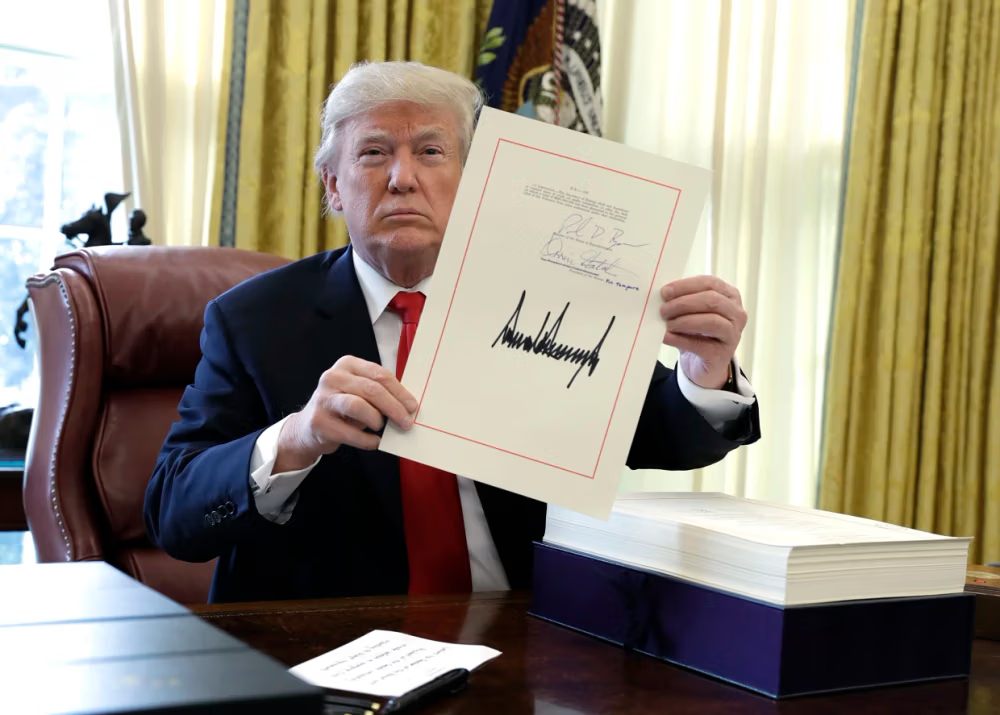U.S. Senate Republicans have narrowly passed President Donald Trump’s sweeping tax-cut and spending bill, moving it one step closer to becoming law. The legislation, which passed on Tuesday with a 51-50 vote, touches nearly every corner of U.S. fiscal policy, ranging from taxes and defense spending to healthcare and food assistance programs.
The Senate’s passage came after Vice President JD Vance broke the tie, following defections from three Republican senators—Thom Tillis of North Carolina, Susan Collins of Maine, and Rand Paul of Kentucky—who joined all 47 Democrats in opposing the bill.
Now headed to the House of Representatives for final approval, the bill remains contentious, with some House Republicans signaling concerns over specific Senate changes. President Trump, however, is eager to sign it before the July 4 Independence Day holiday. House Speaker Mike Johnson said he aims to meet that timeline.
Major Provisions:
At its core, the bill aims to extend Trump’s 2017 tax cuts and introduce new tax breaks targeted at working Americans. This includes income derived from tips and overtime pay. There are also increased deductions aimed at seniors and families.
Defense and immigration enforcement budgets will see significant boosts, reflecting Trump’s long-standing priorities on national security.
On the flip side, the bill proposes sweeping spending cuts—about $930 billion—to social safety net programs like Medicaid and food assistance (SNAP) for low-income Americans. It would also repeal many of former President Joe Biden’s green-energy incentives, rolling back climate-related investments made in recent years.
To accommodate the cost of these provisions, the legislation also proposes raising the federal government’s self-imposed debt ceiling by $5 trillion, adding $3.3 trillion to the national debt over the next decade, according to the Congressional Budget Office (CBO).
Last-Minute Senate Negotiations:
Senate Republicans spent an all-night session debating the bill’s size and its long-term impact on healthcare and the deficit. One key holdout, Senator Lisa Murkowski of Alaska, was eventually swayed after two Alaska-focused provisions were added:
- Additional food-aid funding for Alaska and several other states.
- A $50 billion allocation to help rural hospitals absorb Medicaid cuts.
The House Vote:
With a 220-212 Republican majority, House leaders face a tight margin to push the bill through. Speaker Johnson, speaking to Fox News’ Sean Hannity, said,
“Hopefully we’re voting on this by tomorrow or Thursday at the latest, depending on the weather delays and travel and all the rest—that’s the wild card that we can’t control.”
Severe thunderstorms forecasted for the Washington area could complicate plans.
A White House official told reporters that Trump would be “deeply involved” in persuading House Republicans. Trump, speaking at an event in Florida, called it:
“It’s a great bill. There is something for everyone. And I think it’s going to go very nicely in the House.”
Who Benefits?
According to the Tax Foundation, some of the bill’s largest benefits would go to the top 1 percent of U.S. households—those earning $663,000 or more in 2025. The CBO also noted that high earners are expected to gain the most from the bill’s tax cuts.
Critics highlight that the debt increase represents a wealth transfer from younger to older Americans, according to Reuters, citing nonpartisan analysts.
Republicans, however, dispute the CBO’s deficit projections and argue that Medicaid cuts will primarily target “waste, fraud, and abuse” within the system.
As the House gears up for a critical vote, the stakes remain high for taxpayers, social programs, and the trajectory of U.S. fiscal policy.






